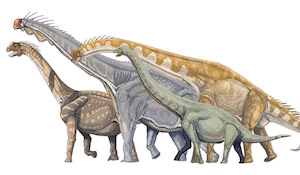
Since the 1970’s, an ongoing debate concerning the blood of dinosaurs has engaged scientists and civilians alike. Although there is no direct evidence that indicates if dinosaurs were cold-blooded or warm-blooded, scientists do have some guesses.
Scientists have made two main arguments. Some believe that dinosaurs were cold-blooded creatures because of their relation to certain reptiles, like modern-day crocodiles. Crocodiles are cold-blooded, which means they cannot generate their own heat. Since these reptiles descended from dinosaurs, some scientists infer that dinosaurs, like crocodiles, were likely also cold-blooded.
In the 1970’s, however, a scientist named Bob Bakker tried to prove that not all dinosaurs were cold-blooded. Instead, Bakker thought dinosaurs could have been warm-blooded because they grew fast, moved swiftly, and represented a variety of carnivores and herbivores. Also, sauropods, the largest animals ever to live on Earth, showed no evidence that they needed insulation to conserve their body heat: this is a key point in Bakker's argument.
Today, scientists believe that dinosaurs were neither warm-blooded nor cold-blooded, but a mix of both. To distribute enough blood throughout their bodies, they would have needed active metabolisms like cold-blooded species but also four-chambered hearts to live like warm-blooded mammals.
We may never know for sure whether dinosaurs were warm-blooded or cold-blooded, but clearly some evidence exists to prove that this issue may not be so binary after all.
[Source:
Walking With Dinosaurs
]

